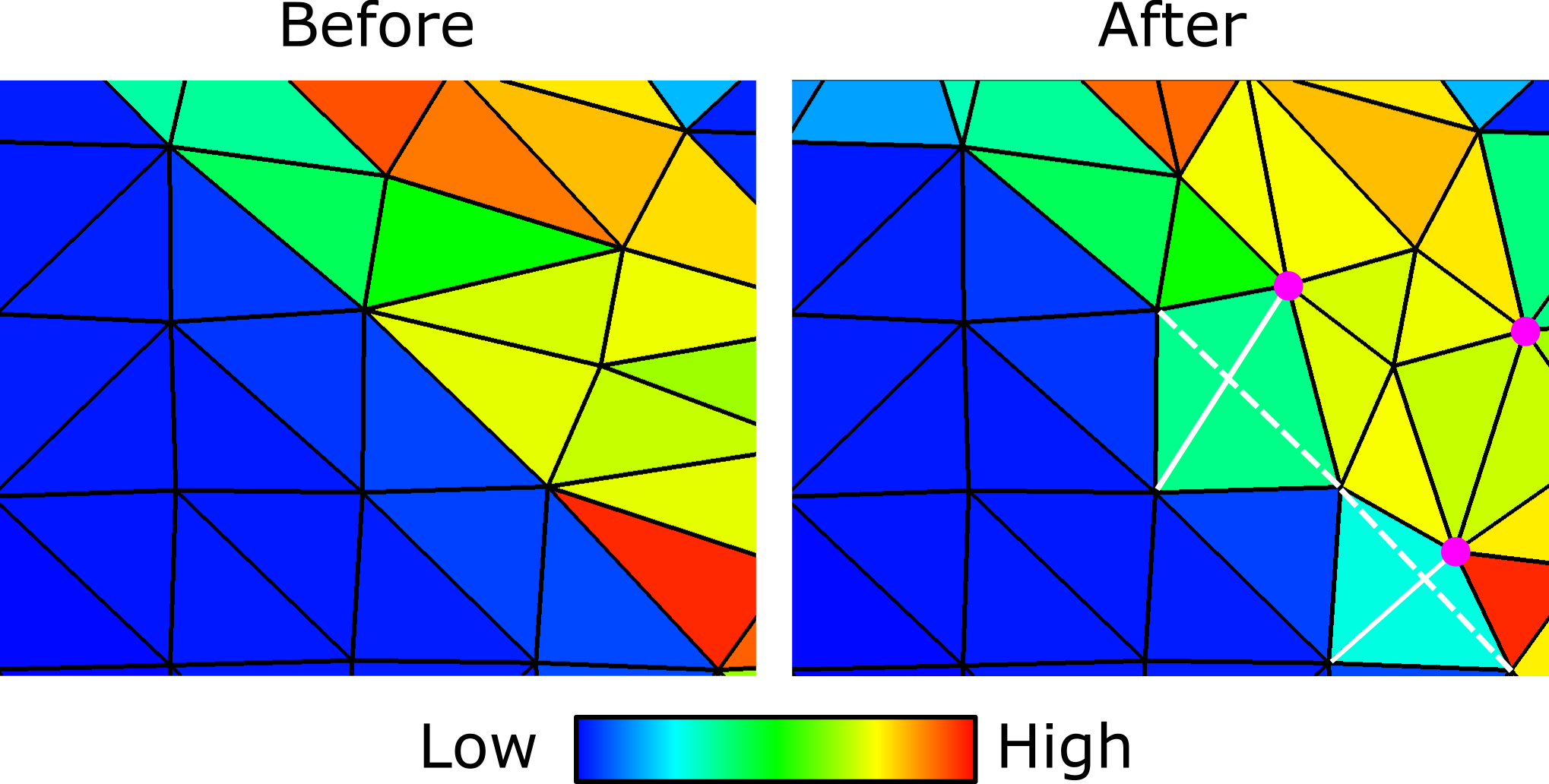Remeshing
We assess the mesh quality at fixed temporal intervals and use specific quality measures to decide whether to keep using the present mesh or remesh. For example, if the smallest angle of an element is less than a certain prescribed value, we remesh.
A group of nodes in the deformed mesh is removed from the mesh if any of the following criteria is met. For instance, if the deformed or displaced boundary is restored to the initial configuration, some nodes may be left outside of the boundaries of the new domain. Internal nodes, if surrounded only by small elements, may be removed from the point set to be remeshed.
Once all criteria are enforced, a final list of nodes is collected. These nodes are provided to the Triangle library to construct a new triangulation of the domain. At this stage, new nodes might be inserted into the mesh or the mesh topology changed through edge-flipping during the triangulation.

After the new mesh is created, the boundary conditions, derivatives of shape function, and mass matrix have to be re-calculated.
Also, an inter-mesh mapping of variables is performed. For data associated to nodes (e.g., velocity and temperature), we use linear interpolation of the data from the old mesh to evaluate the field at the new nodal location. For data associated to elements (e.g., strain and stress), we use a nearest-neighbor mapping.